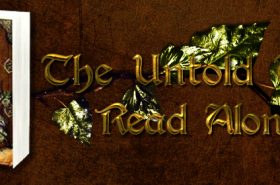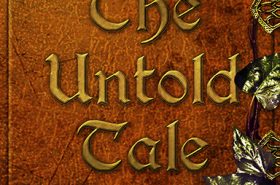After the popularity of my post on the various subgenres of Fantasy, I decided it was unfair to leave authors of the other common genres in the dark. Categorizing your work is one of the most difficult parts of the process, and it’s easy to see why authors struggle. So if I can help by providing a list of the various subgenres and their definitions, shouldn’t I? That’s exactly what I thought, too. So over the next few weeks, I’m going to do just that. Starting with Romance.
When I say “Romance,” I bet three-quarters of you instantly picture Harlequin and a ripped, shirtless dude who’s apparently never heard of a hair cut fawning over a buxom girl who tried to squeeze unsuccessfully into a corset three sizes too small for her chest. It’s okay. I did too. Because that’s the image we’ve been told embodies Romance. But as classic as that bodice-ripping image is, it’s not the whole picture.
Romance actually encompasses 10 separate subgenres, and as Romance fans can attest, each is distinctly different from the others. In fact, of all the popular genres of mainstream fiction, I’d hazard Romance is the only one where fans stubbornly refuse to read anything other than their favored subgenre. And that’s because of the dramatic difference between them. They’re almost so different as to not really belong under the same genre header. If it weren’t for the consistent narrative structure revolving around a love story with an emotionally satisfying end, these subgenres would have very little in common.
What are they? Let’s find out.
Contemporary Romance
Set after 1945, Contemporary Romance is the largest subgenre, cornering well over half of all Romance titles sold. It generally takes place in the time it was written and will reflect social behaviors of that time. For example, a Contemporary Romance set in 1950 would likely feature a heroine who’s primary goal is to get married, raise a family and be a good housewife, while one set in 2000 would probably feature a feistier, career-driven female with more progressive views on love. This subgenre shares a lot of similarities with Women’s Fiction (a subgenre of General Fiction), but a Contemporary Romance always focuses on the romance while Women’s Fiction can focus on any life change relevant to women.
Historical Romance
This is the only subgenre to have subgenres of its own. The only stipulation is that it be set prior to 1945 and, of course, the plot must be centered on romance. Other than that, it can fall into any of these subcategories:
- Viking: Obviously features Vikings in the Dark or Middle Ages.
- Medieval: Your typical Knight and Damsel in Distress situation.
- Tudor: Set in the English time period of the same name — 1485 to 1558.
- Elizabethan: Yep, more England. This time between the dates of 1558 and 1603, when the first Elizabeth ruled.
- Georgian: Hey, look! More England! These take place between 1714 and 1810, during the historical period of the same name.
- Regency: A super short time period in English history (yep, still England) — 1810 to 1820.
- Victorian: Yet another moment in English history (Man! This subgenre really should be called English History Romance!) — 1832 to 1901.
- Pirate: (Did anyone else just laugh over the fact this is considered its own thing?) I think the name speaks for itself, don’t you? Think Johnny Depp and Pirates of the Caribbean and you’re golden.
- Colonial United States: Ah yes, now we get to the American-centric portion of history. This takes place between 1630 and 1798. So if Elizabethan or Georgian England isn’t your thing, cross the ocean and explore America instead.
- Civil War: Typically, these are set on the Confederacy side (since everyone knows the Confederate South was a sexy place to be), but they don’t have to be. They just have to be set during the Civil War.
- Western: I’m sure all of us just pictured cowboys. But those cowboys actually can be American, Canadian or Australian. These books actually focus on the experiences of the female though, rather than the male-centric version found in the Western genre itself.
- Native American: These books explore Native American cultures as much as they tell a love story. They also usually contain some element of fighting against prejudice and paint a picture of cultural acceptance.
- Americana: A simple subcategory, Americana takes place between 1880 and 1920 in Small Town USA.
- Celtic: This is apparently not recognized as a thing, but I’m including it because I’ve personally read at least a hundred Romance books featuring Scottish or Irish backdrops, cultures and beliefs. That qualifies as a subcategory in my book.
Romantic Suspense:
Combining elements of the Mystery genre with Romance, this subgenre is a hybrid. It still features a relationship at the heart of the story, but is more plot-driven than its character-driven subgenre brethren.
The most common set-up is a woman who’s become a victim falling for a man who’s in a position of authority/protection — police officer, FBI agent, Firefighter, Navy SEAL etc. Solving the mystery around the crime brings them closer together and helps them fall in love. The elements of suspense — mystery, thriller, etc. — become integral to the storyline, affecting the decisions the characters make and driving the plot forward. At the same time, the romance remains the focus, so those same suspenseful elements have a direct impact on the way the love story unfolds. All in all, this is one of the more complicated Romance subgenres to write, but it’s also one of the more fun to read.
Paranormal Romance:
Another hybrid, Paranormal Romance draws heavily from Fantasy. In fact, it’s considered a subgenre of Fantasy as well.
“Paranormal” simply means anything not normal, so the staple of this subgenre is weaving fantastical elements into contemporary settings. Vampires, Werewolves, Witches, Demons, Psychics — all are fair game in this subgenre. The most common settings pull from Urban Fantasy or Dark Fantasy, but there are even some Historical settings out there. Sometimes the larger culture is aware of the paranormal happenings in their midst (à la Charlaine Harris’s Sookie Stackhouse novels) and other times they’re not (à la Stephenie Meyer’s Twilight Saga). But almost always, a Paranormal Romance blooms between a human, and something not-quite-human.
Science Fiction Romance:
Science Fiction Romance is to Science Fiction what Paranormal Romance is to Fantasy. Meaning it pulls heavily from the Science Fiction genre, weaving in futuristic, alien or technological elements. The only difference between a regular Science Fiction tale and a Science Fiction Romance is the focus of the plot. Just like all Romance, the heart of a Science Fiction Romance is the blossoming love between two main characters. Now, whether those are both human characters on some outer-space road trip, or a human and an alien on some exotic, distant planet is up to you.
Time Travel Romance:
I’m honestly not quite sure why this gets its own dedicated subgenre. Depending on the set-up of the time travel, whether it’s magical or scientific, it could easily fall within the requirements of either Paranormal Romance or Science Fiction Romance. But, apparently I’m wrong, because this is listed on multiple sources as a Romance subgenre.
A Time Travel Romance obviously has to contain an element of time travel. Whether you have a character traveling back in time to find their soul mate or have someone travel forward in time for the same thing doesn’t really matter. What does matter is that while you create the usual romantic plotline, you also pay attention to the clash of cultures. Time Travel Romances offer a unique way to filter viewpoints on current and past society through the lens of a character outside of it. In that sense, they can also contain aspects of morality or satire.
Inspirational Romance:
Inspirational Romance is a subgenre aimed at a specific niche of readers. It combines strong Christian elements with the more traditional aspects of Romance. However, because it does conform to the Christian belief system, it typically doesn’t include things like gratuitous violence or swearing, and sex, if it’s shown, only happens after marriage. The entire thing has a chaste, traditional courtship feel that appeals to readers wanting the warm and fuzzy experience of true love conquering all without the grit or vulgarity.
Erotic Romance:
I think there may be something intrinsically wrong with listing this directly under Inspirational Romance, but oh well. Just like Inspirational Romance targets a specific group of readers, so does Erotic Romance. And they’re at complete opposite ends of the spectrum! Where Inspirational is clean and innocent, Erotic Romance is dirty and explicit. It contains strong sexual content and frank language. But despite the heavier emphasis on sex and frequency of the sexual scenes, Erotic Romance stills contains developed characters and plots that could stand on their own without the steamier bits. Technically, I would say E.L. James’s 50 Shades of Grey is an Erotic Romance. If you strip out the many sex scenes, you’re actually left with a semi-decent story of two people learning to love.
One thing to note: Erotic Romance is not the same as Erotica, which is its own genre. In Erotica, the sex scenes are all that matter, taking up three-quarters of the book at the expense of well developed characters or story.
YA (Young Adult) Romance:
This is a newer subgenre, and may not even be fully recognized as such yet. But I’m choosing to list it as its own thing because it has a distinct set of requirements just like the others do.
YA Romance targets readers between the ages of 15 and 18. It deals with things like first loves, first kisses, and losing one’s virginity — themes appropriate for the target audience. The romances are passionate in the way that only teenagers can pull off, and the prose is typically kept at a PG-13 rating. So while there are some steamy parts, they’re not as explicit as those contained in books intended for adults. Why is this worthy of a subgenre designation? Because more and more titles are being released that would fit; titles where the primary plot focuses on the romantic relationship between the characters and not something more external and grand, like saving the world. They can fall within any of the previous subgenres, but due to the specific age range of the target audience, I feel they should be set apart.
NA (New Adult) Romance:
The newest subgenre on the block, New Adult is quickly gaining popularity. Like Young Adult, it targets a specific age range — 18 to 25 — and deals with themes like discovering one’s self, leaving home for the first time, finding a career, etc. It also incorporates things like overcoming that first heartbreak, committing to a serious relationship, starting a family, and other things that resonate with readers in that stage of life. It lifts the PG-13 rating of YA, including more explicit sexual content and stronger language. How is it different from other adult romances? It’s not, really. Aside from the specific thematic elements and the target audience, it’s much the same as what you’d find in more mature titles. Why did I give it its own designation then? Because it’s the cool thing to do. Duh! Just kidding. It’s because it does have stipulations, requirements that dictate the path of the story. That’s what defines all the other subgenres, so why shouldn’t it come into play here?
And there you have it. As you can see, these subgenres vary widely, crossing over into the other mainstream fiction genres and back again. The main thing to remember is that while romantic subplots can and are included in nearly all genres of fiction, only plots where romance is the driving force can be considered true Romance. Regardless of which subgenre they are, they all must boil down to one simple thing — a story of two people falling in love who eventually end up together. If that sums up the core of your story, congratulations! You’re a Romance writer. And with Romance remaining among the most popular genres, there’s definitely no shame in that.
Next week, we’ll continue our exploration of subgenres by meandering through the intimidating number Science Fiction sports. In the meantime, if you feel I’ve miscategorized, misrepresented or just plain missed a Romance subgenre, feel free to add/correct in the comments below. As always, thanks for reading! 🙂
**Another post syndicated from Senior Editor Kisa Whipkey’s personal blog, Nightwolf’s Corner**



